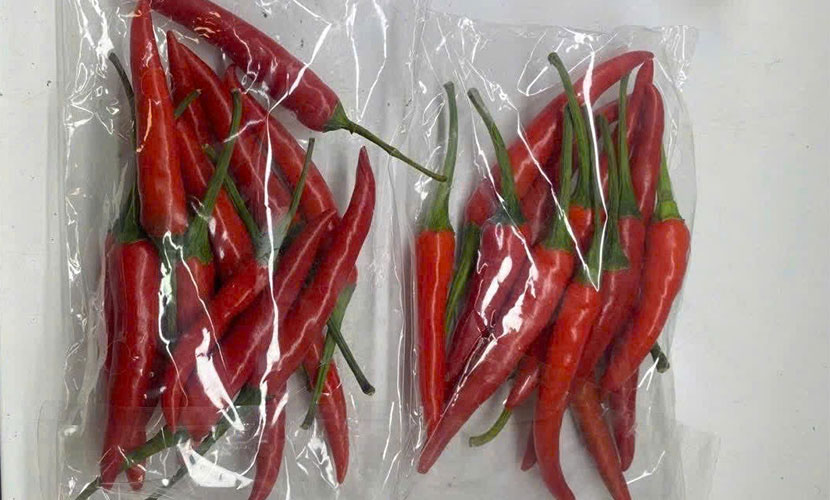
Vietnamese chili pepper has long become an indispensable part of the traditional cuisine. It is not only bringing a distinctive spicy flavor but also being a crop with high economic value. Vietnam has favorable climatic conditions, large domestic demand, and potential export markets.
Therefore, the chili growing industry in Vietnam is developing strongly. However, alongside great opportunities, chili farmers also face many challenges, from pests and diseases, climate change to fierce market competition.
Vietnam has a tropical monsoon climate, very suitable for year-round chili cultivation. Fertile alluvial lands are ideal areas for growing chili with high yield and stable quality. Specifically, they are the Mekong Delta, the Central Highlands, and the Southeast region.

Vietnamese chili pepper
In addition, the initial investment cost for Vietnamese chili pepper farming is not too high. As a result, it is easy for farmers to adopt this cultivation model without needing large capital. After only four months of planting, farmers can harvest, facilitating rapid capital turnover.
The chili consumption market in Vietnam is very large since chili is an essential spice in most dishes. Besides serving domestic demand, Vietnam’s chili growing sector also has great export potential. Demanding markets are increasingly interested in Vietnam’s chili products due to stable quality and reasonable prices.
Furthermore, many food processing enterprises have high demand for this raw material. Especially, they are enterprises which related in the production of chili sauce, chili powder, and related spice products.
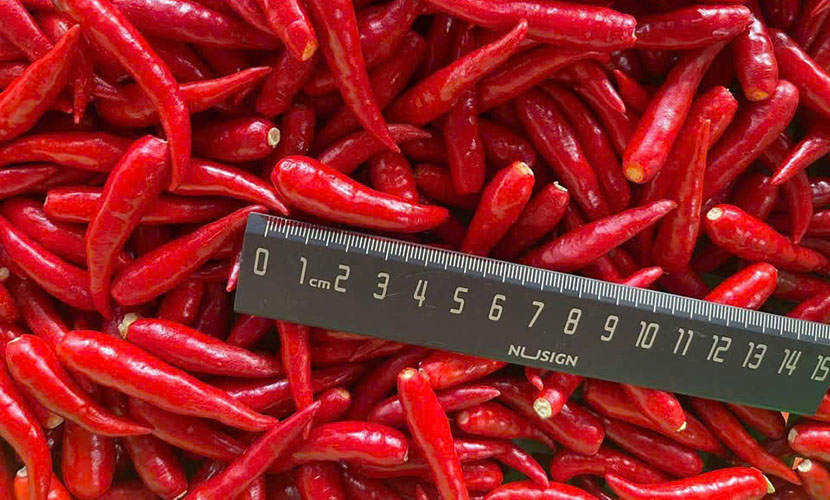
Frozen chili pepper from Vietnam
To support sustainable development for farmers, agricultural extension policies have been widely implemented in many localities. Programs supporting for seeds, fertilizers, and Vietgap and Globalgap cultivation standards help chili growers improve productivity and meet import requirements.
Besides, the participation of exporting enterprises of Vietnamese chili in developing sustainable raw material areas is also an important factor that helps the chili industry expand production scale.
Despite much development potential, Vietnamese chili pepper still faces numerous difficulties. One of the biggest challenges is pests and diseases. Pests such as thrips, green worms, red mites, and mealybugs can severely affect yield and crop quality.
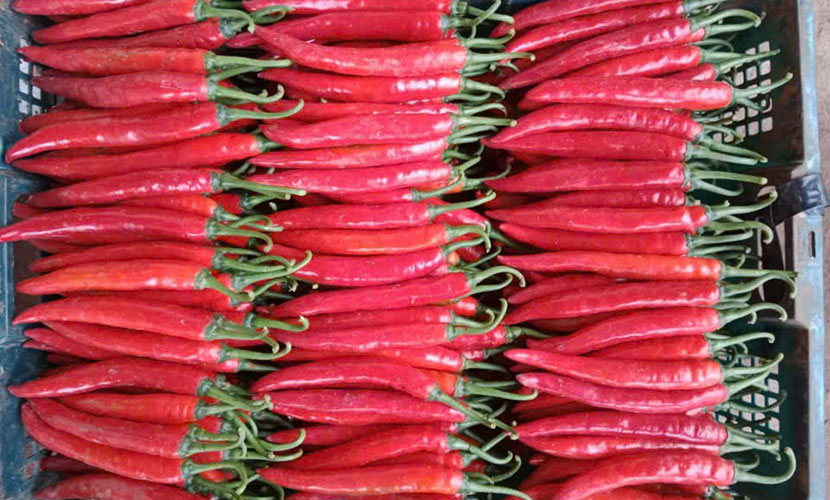
Big chili from Vietnam
In addition, common diseases like bacterial wilt, anthracnose, and leaf curl frequently occur, forcing farmers to apply effective prevention measures. However, excessive use of pesticides to control pests can reduce product quality, causing difficulties in exporting to demanding markets.
Besides pests and diseases, climate change is another major challenge for the Vietnam’s chili industry. Unpredictable weather, prolonged droughts, or abnormal storms can reduce yield and affect fruit quality. Both excessively high and low temperatures negatively impact plant growth. Moreover, unsynchronized irrigation systems in some growing areas also make it difficult for farmers to maintain stable chili development.
Another issue is fierce market competition. Chili prices often fluctuate due to dependence on export demand, leading to profit risks for farmers. Meanwhile, major chili-exporting countries like Thailand, India, and China hold advantages due to large-scale production and consistent product quality. Without a well-planned development strategy, Vietnamese chili will face difficulties in maintaining and expanding market share internationally.
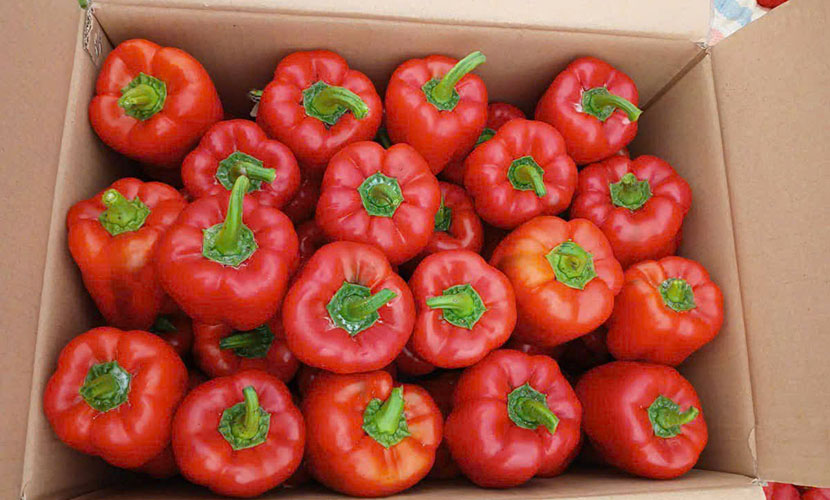
Bell chili from Vietnam
In addition, increasingly strict quality standards are also a barrier for the Vietnamese chili industry. Markets such as the EU, the US, and Japan require products to meet strict pesticide residue limits, forcing farmers to change cultivation methods. Currently, very few chili production models meet Globalgap standards, limiting Vietnamese chili’s access to international markets. Investment in post-harvest preservation technology is also important to extend shelf life and enhance product value.
Experts from the Ministry of Agriculture and Environment have given important opinions on chili cultivation in Vietnam. Specifically, they include strategies to develop agriculture in an ecological, organic, and circular direction to reduce carbon emissions and increase added value for agricultural products, especially chili. They emphasize that applying sustainable cultivation methods will help improve competitiveness and sustainable development for agriculture.
Facing these opportunities and challenges, Vietnam’s chili growing sector needs a long-term development strategy to ensure sustainability. One key solution is to promote linkage models between farmers and enterprises to ensure stable output and avoid supply surpluses. Cooperatives, agricultural organizations, and processing businesses can jointly build certified raw material zones to enhance product value and expand export markets.
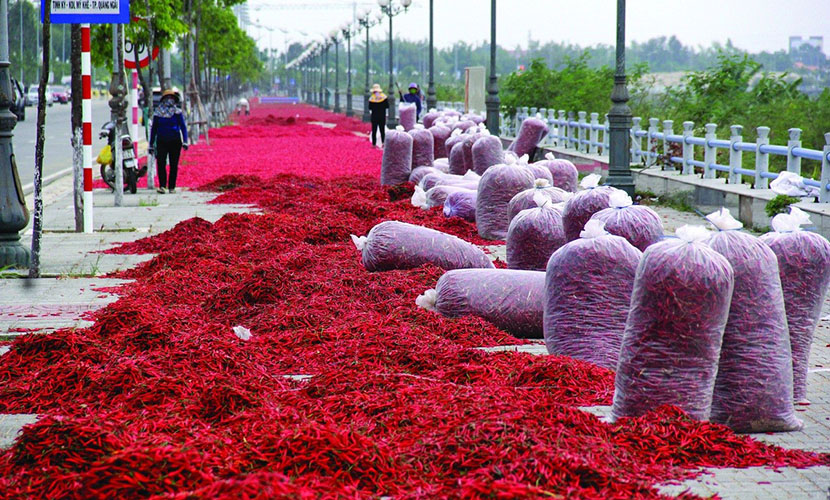
Vietnamese chili pepper harvest
Additionally, applying biotechnology in production is an inevitable trend. Organic cultivation methods, use of biological fertilizers, and safe pest control measures will help minimize environmental impacts and meet international standards. Moreover, investment in production according to Vietgap and Globalgap standards will improve product quality and facilitate Vietnamese chili’s competitiveness in the global market.
Another approach is developing processed chili products such as chili powder, chili sauce, or related spices. This not only increases economic value but also reduces pressure on fresh chili consumption, avoiding price fluctuations caused by oversupply. At the same time, post-harvest preservation technology should be emphasized to extend shelf life and ensure product quality for export.
Vietnam’s chili growing sector has many development opportunities thanks to favorable natural conditions, large market demand, and support from agricultural policies. However, to ensure sustainability, chili farmers need to adapt to climate change, improve product quality according to international standards.
In addition, they should seek stable directions through cooperative and modern production models. If these current challenges are addressed, Vietnam can completely become one of the leading chili suppliers in the region.
Vietnamese source: https://tapchivietnamhuongsac.vn/trong-ot-tai-viet-nam-co-hoi-thach-thuc-va-huong-di-ben-vung-1109.html
